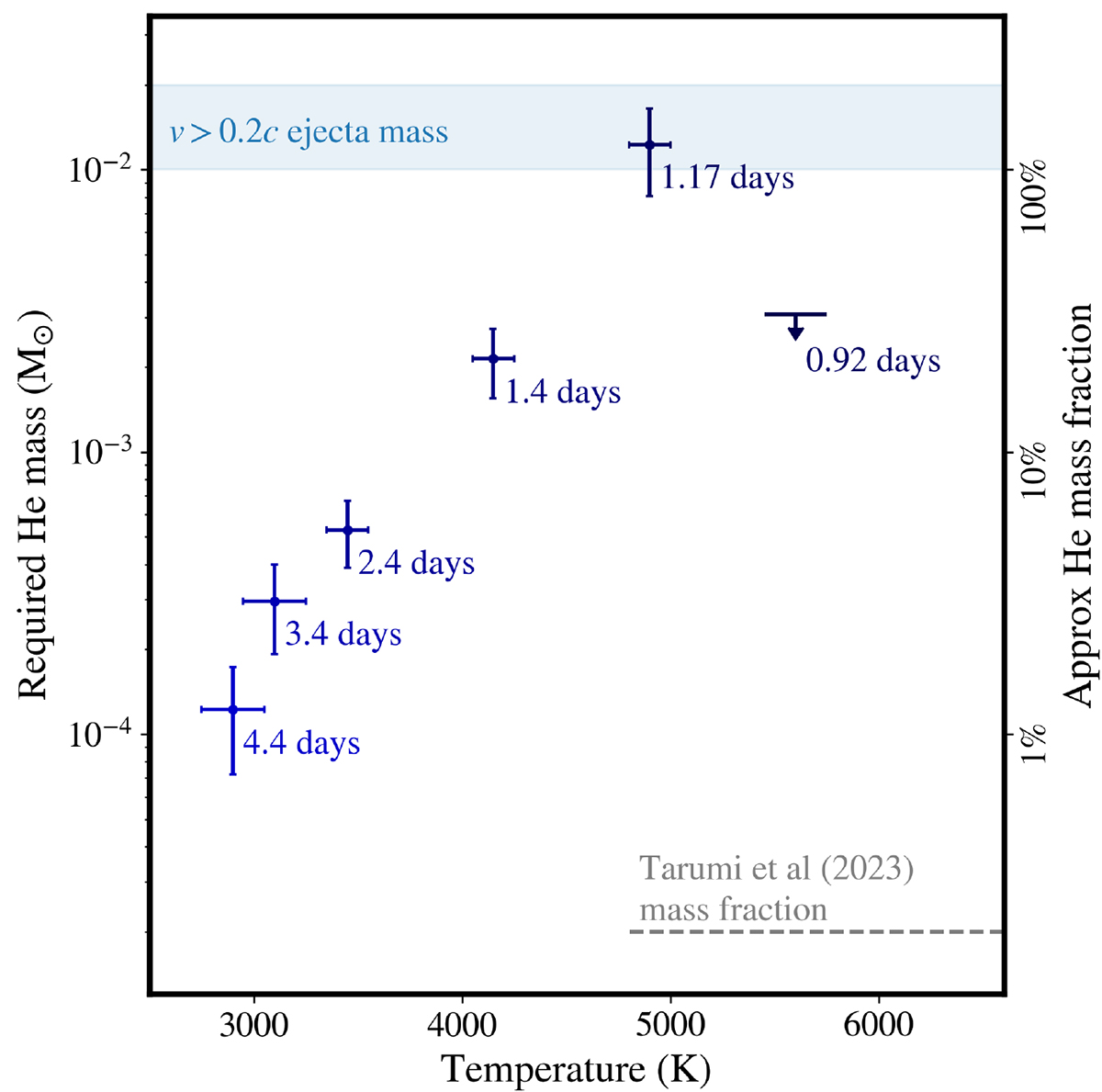Fig. 5.

Download original image
Estimated helium mass required to produce the absorption of the 1 μm feature in early spectra. These estimates are derived using the NLTE helium model described in Sect. 4. The left y-axis indicates the approximate He mass fraction (given the high velocity ejecta component is around ∼0.01 M⊙, which is likely most representative around three to five days post merger), while the exact helium mass fraction for each epoch can be found in Table 1. The required helium mass changes drastically between epochs, and for any epoch, it is largely inconsistent with all remaining epochs (primarily due to the decreasing strength of radiative pathways leaving triplet helium). At early times, the helium mass required for a feature is comparable to the total mass of the early higher-velocity (v ≈ 0.2–0.3c) ‘blue’ ejecta. The absence of a helium feature at 0.92 days provides a 5σ upper limit on the helium mass (reported as solely the statistical uncertainty from the observed spectra). The grey dashed line indicates the mass fraction considered in Tarumi et al. (2023).
Current usage metrics show cumulative count of Article Views (full-text article views including HTML views, PDF and ePub downloads, according to the available data) and Abstracts Views on Vision4Press platform.
Data correspond to usage on the plateform after 2015. The current usage metrics is available 48-96 hours after online publication and is updated daily on week days.
Initial download of the metrics may take a while.


